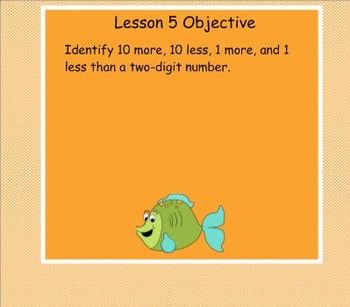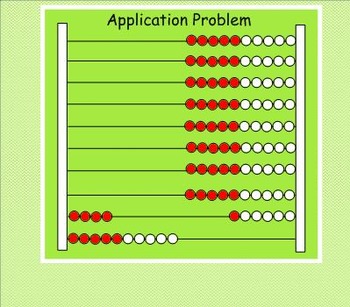Eureka Math Module Four for First Grade
Julie's Jewels
404 Followers
Grade Levels
1st
Subjects
Resource Type
Standards
CCSS1.NBT.A.1
CCSS1.NBT.B.2
CCSS1.NBT.B.3
CCSS1.NBT.C.4
CCSS1.NBT.C.5
Formats Included
- NOTEBOOK (SMARTboard) File
Pages
242 pages
Julie's Jewels
404 Followers
Description
If you use the Eureka math program in first grade, this is just what you need. This 242 page Smart notebook file includes the objective for each lesson, pages for the application problem, and concept development. Many of the pages are interactive to keep your children engaged in the lesson. Don't worry if you don't have a Rekenrek, because one is included with the appropriate lessons.
It is easy to follow because each page has the section title and all pages from one lesson are the same color. You will need to download the free lesson plan pages from the Great Minds website to assist you with this file.
It is easy to follow because each page has the section title and all pages from one lesson are the same color. You will need to download the free lesson plan pages from the Great Minds website to assist you with this file.
Total Pages
242 pages
Answer Key
N/A
Teaching Duration
N/A
Report this resource to TPT
Reported resources will be reviewed by our team. Report this resource to let us know if this resource violates TPT’s content guidelines.
Standards
to see state-specific standards (only available in the US).
CCSS1.NBT.A.1
Count to 120, starting at any number less than 120. In this range, read and write numerals and represent a number of objects with a written numeral.
CCSS1.NBT.B.2
Understand that the two digits of a two-digit number represent amounts of tens and ones. Understand the following as special cases:
CCSS1.NBT.B.3
Compare two two-digit numbers based on meanings of the tens and ones digits, recording the results of comparisons with the symbols >, =, and <.
CCSS1.NBT.C.4
Add within 100, including adding a two-digit number and a one-digit number, and adding a two-digit number and a multiple of 10, using concrete models or drawings and strategies based on place value, properties of operations, and/or the relationship between addition and subtraction; relate the strategy to a written method and explain the reasoning used. Understand that in adding two-digit numbers, one adds tens and tens, ones and ones; and sometimes it is necessary to compose a ten.
CCSS1.NBT.C.5
Given a two-digit number, mentally find 10 more or 10 less than the number, without having to count; explain the reasoning used.





